Missions Trip to Dominican Republic, March 2019
In March 2019, a fourteen-person team from
Stone Hill Church
went on a short-term missions trip to the Dominican Republic.
We were originally planning to go to Haiti,
as we had done for the past several years,
but in February, the United States State Department issued
a travel advisory, telling U.S. citizens not to travel to Haiti,
so we had to change our plans.
Fortunately for us, our partner organization, the
Foundation For Peace (FFP),
works in the Dominican Republic as well,
and despite the incredibly short notice,
was able to organize a successful trip for us to the Dominican
Republic during the same week that we were planning to go to Haiti.
In addition, several FFP staff members from Haiti
traveled to the Dominican Republic to assist our team.
We are deeply grateful to FFP for making this trip happen.
Pictured below is our team (plus some of the FFP staff)
at the Santo Domingo airport just after we arrived.
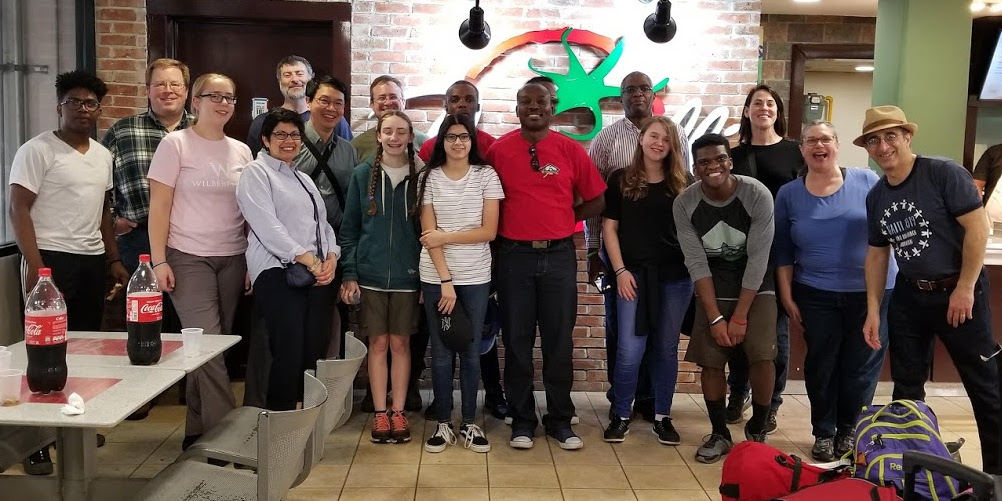
FFP’s national director for the Dominican Republic
is Kristin Hamner, who has been with FFP for about fourteen years.
About five years ago, she inherited some money from her grandfather
and felt strongly led by God to purchase a property in El Batey,
a village near the town of Bonao in the center of the country.
The price was incredibly low because the access road was in
dire condition, but the property itself was beautiful, with
many fine buildings suitable for hosting teams such as ours.
Pictured below is our team sitting in the main room of Kristin's house.
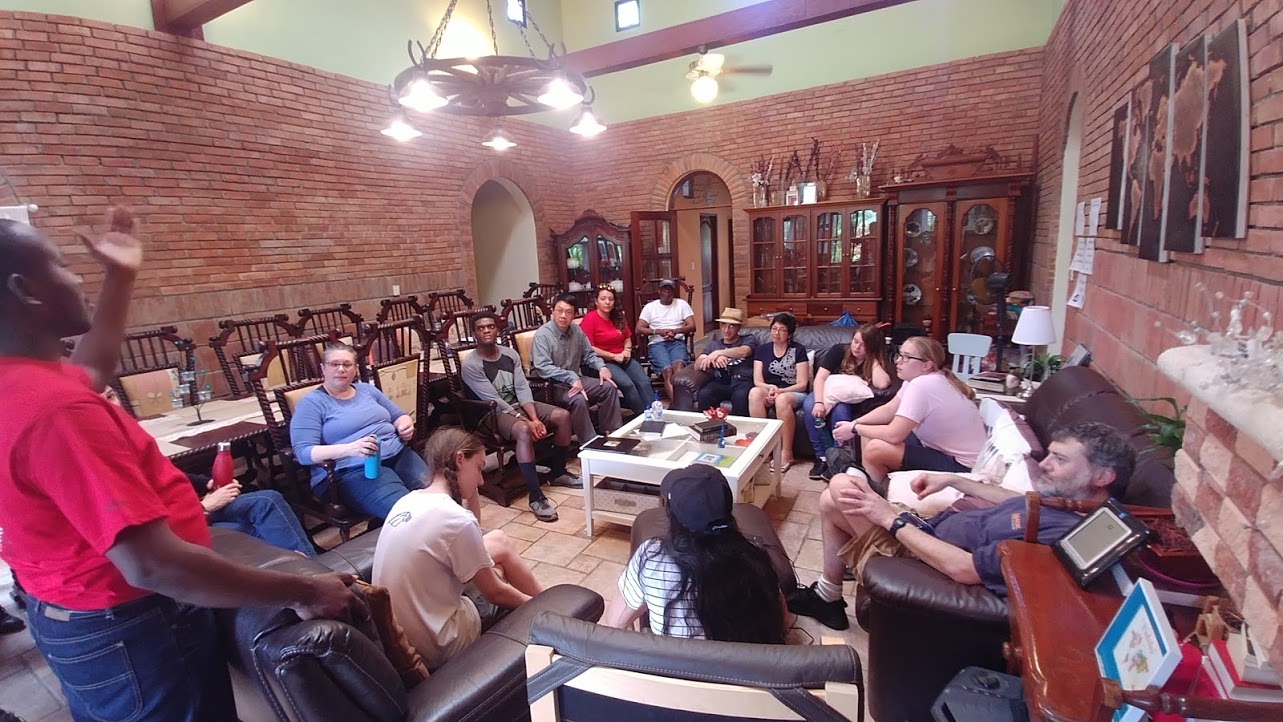
Kristin had pledged to God to transform the community of El Batey
for God’s glory. The economy there is not doing so well
because it is based on agriculture, which is becoming increasingly
less profitable. There are just a few big landowners; most are
day laborers who live from hand to mouth.
One of the main projects for the week was
to work on building a community center. Pictured below is what the
site looked like at the beginning of the week.
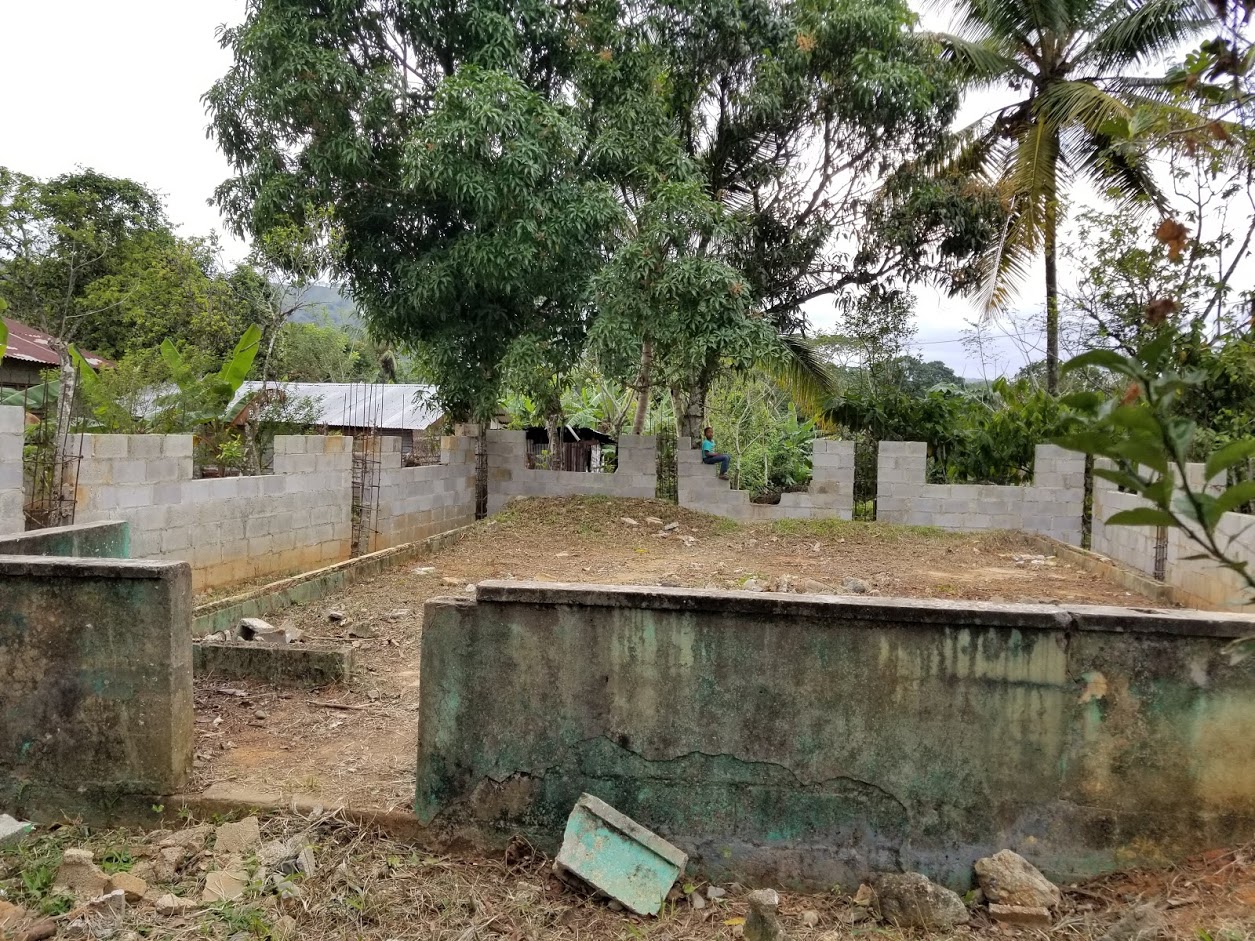
The first step was to move the concrete cinder blocks from where
they had been dumped from the truck into the worksite.
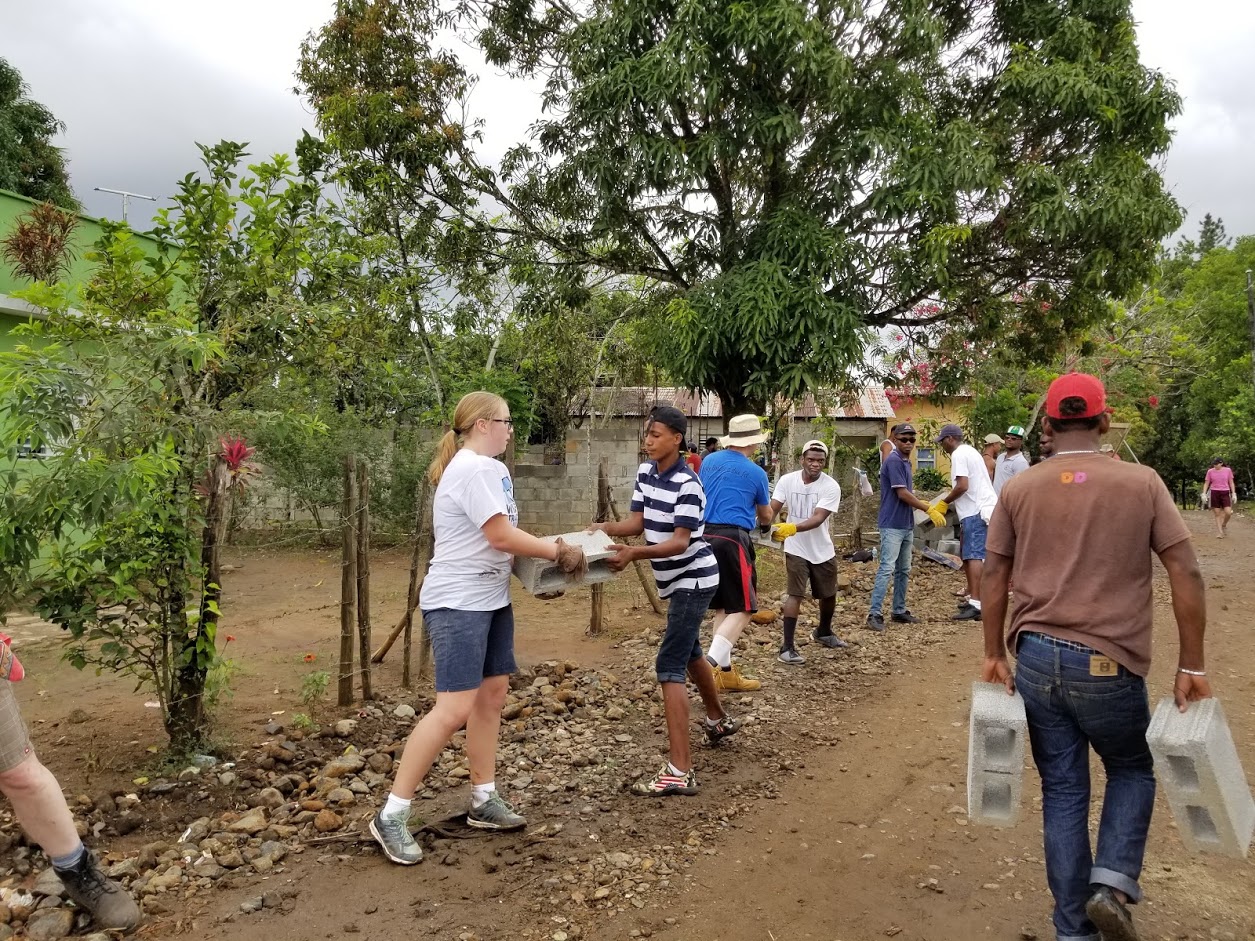
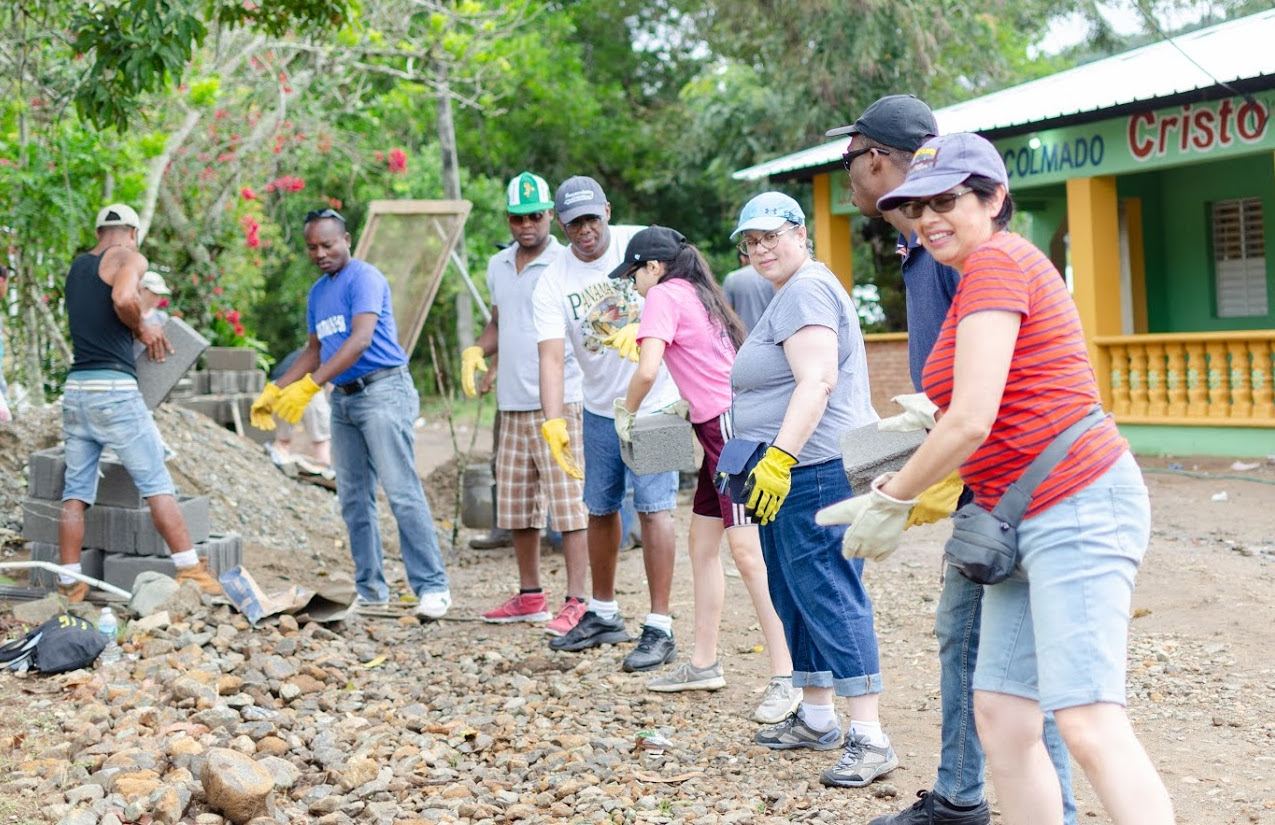
Mixing concrete and cement was an ongoing task throughout the week.
One part of this task was to filter out large pebbles from the sand
by shoveling it through a screen with a fine mesh, as you can see
below.
(In the background you can see a bar, which was run by one
of the wealthier people in the community. During most of the
week, they played music, which was intended for the patrons,
but which we were able to enjoy as well.)
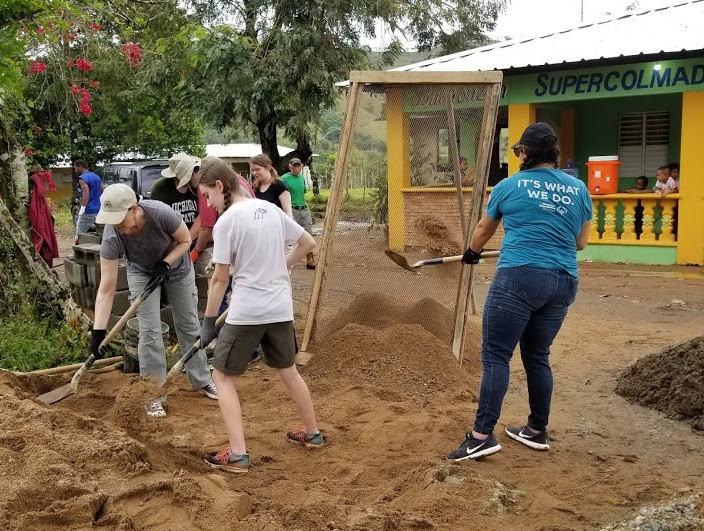
Next, guide strings were stretched across the wall, and
cement was laid onto the previous layer of blocks. Below
is a picture of the foreman showing us how to lay cement.
Unfortunately he was around for only one or two days before
he had to leave for the hospital for back surgery.
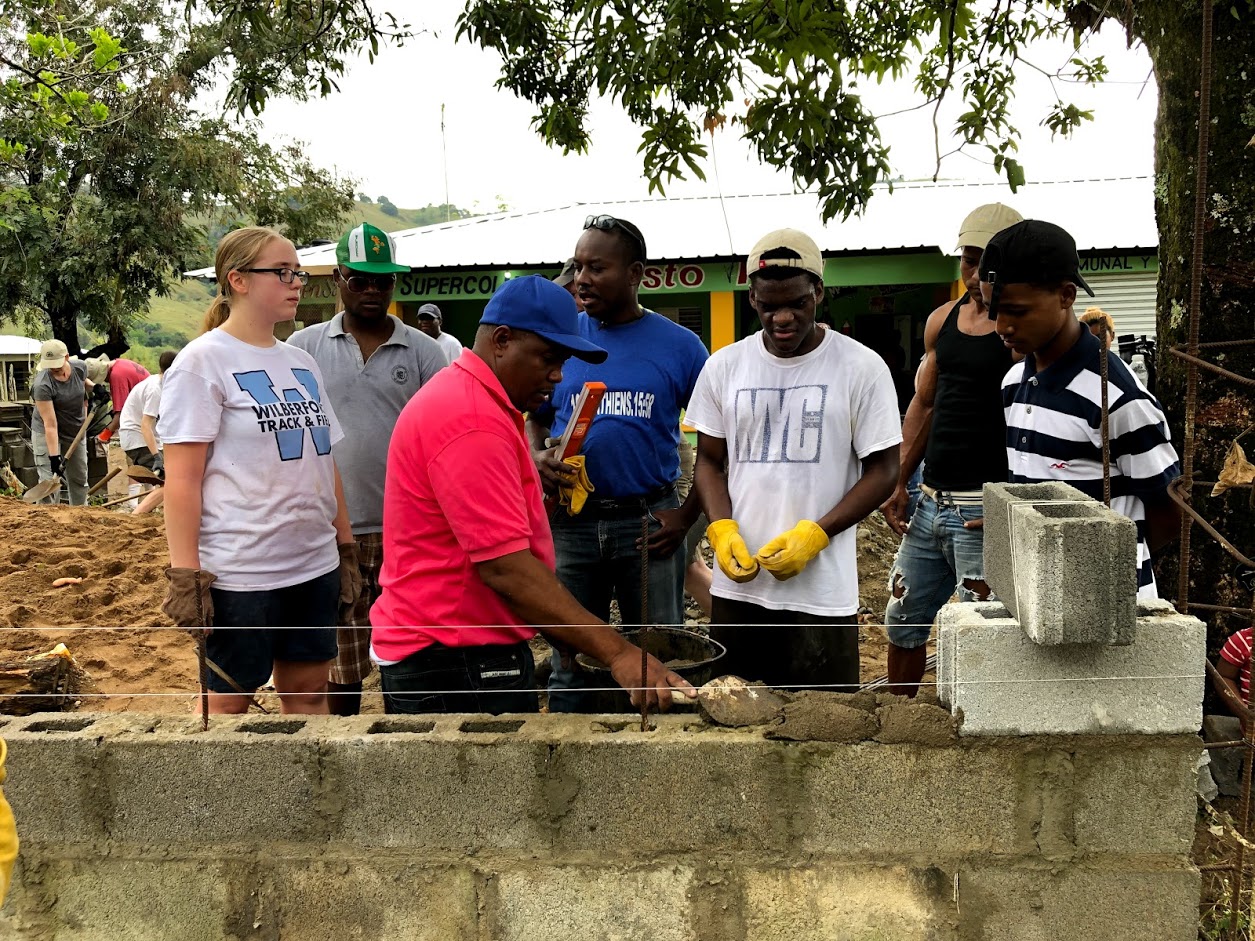
Positioning the blocks must be done carefully, using a hammer
to tap it gently and a level to make sure it is perfectly
aligned. To be honest, most of us were not very skilled,
and unfortunately, some of the blocks had to be ripped off
and re-done because they were not properly positioned the first time.
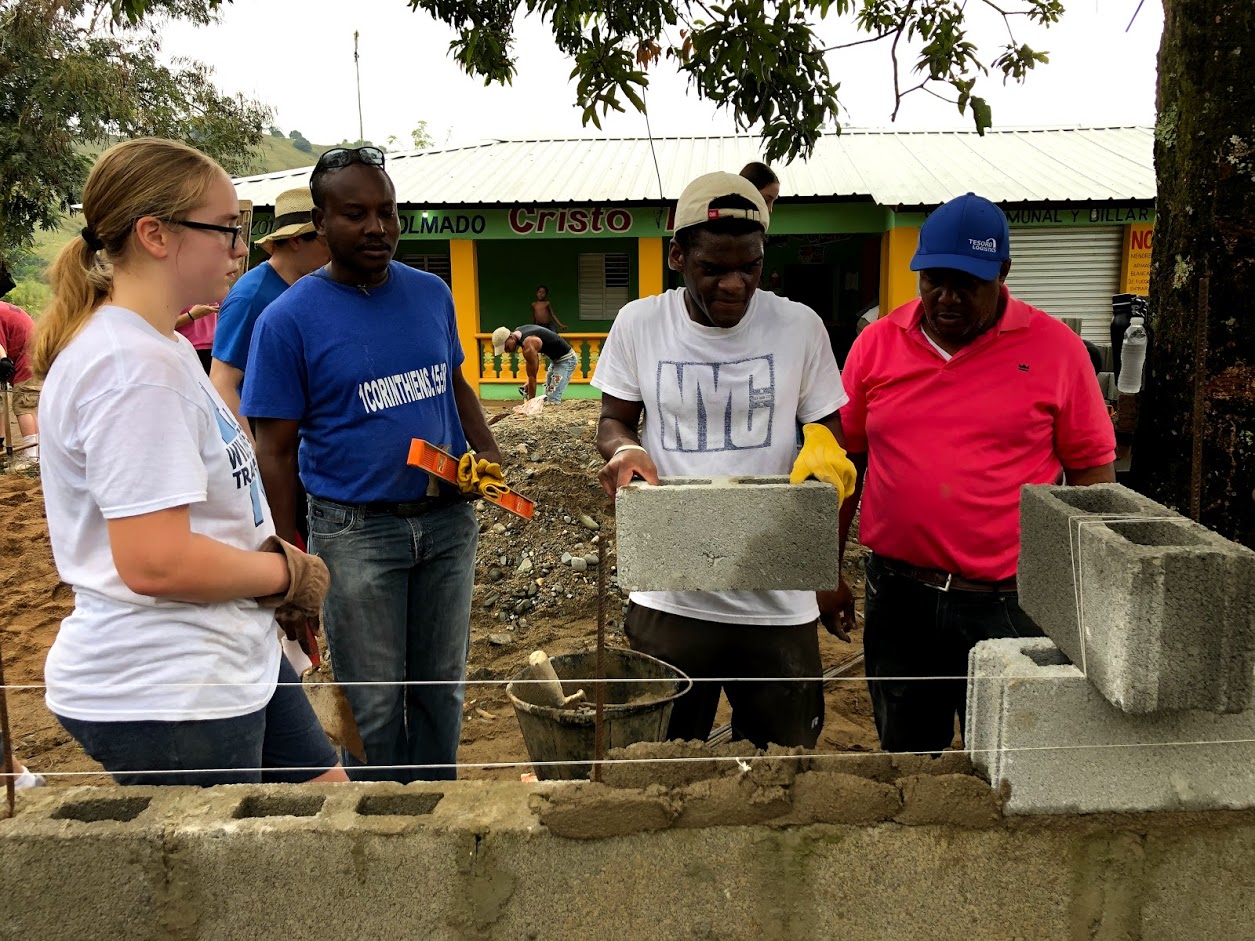

As the week progressed, the walls got higher, and we had to
stand on platforms to reach the top of the growing wall.
Wood is a scarce commodity, and the wood that we used was rented.
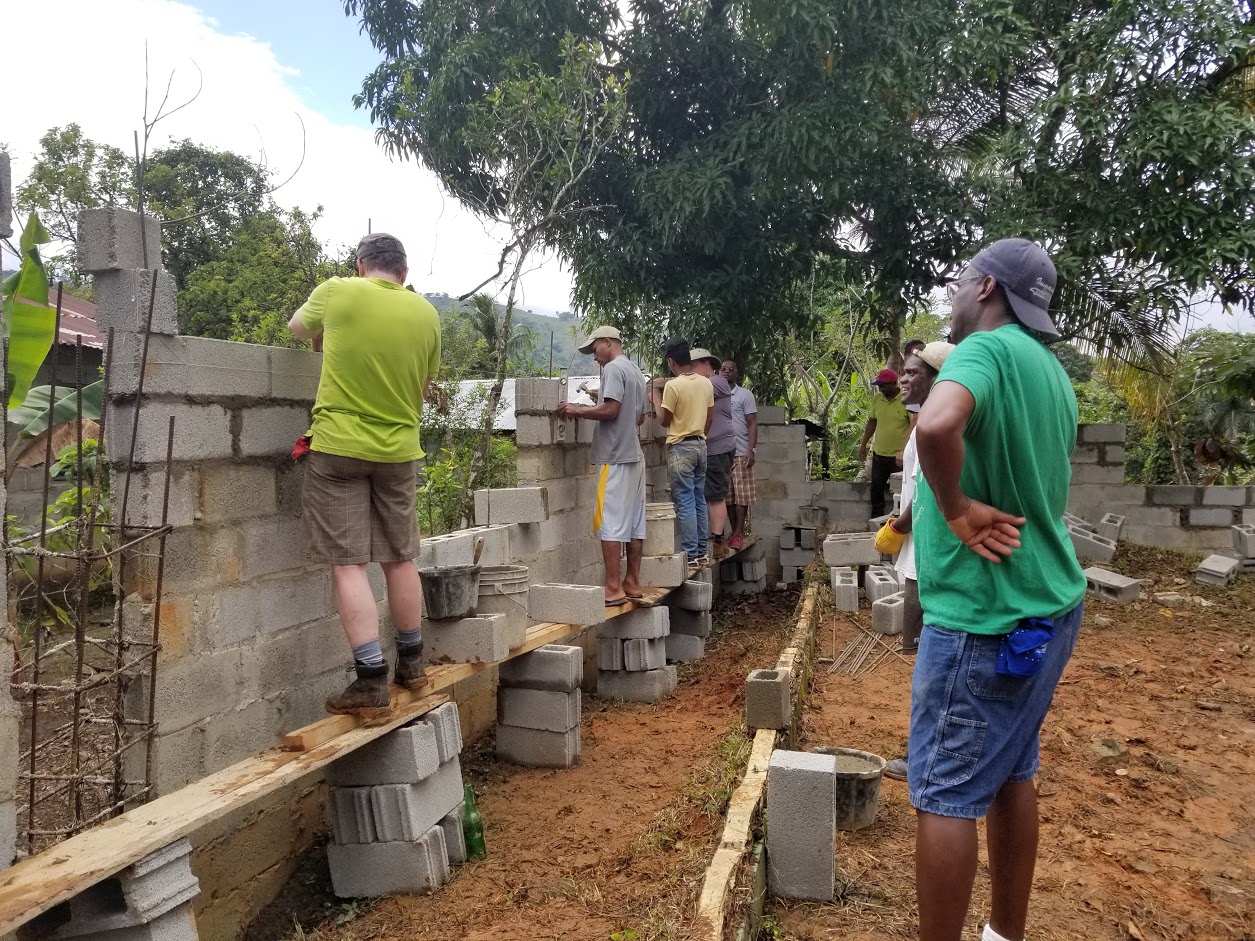
Another task was cutting rebar. This was a tedious job at first
because the hacksaw was dull, but it was amazing how much easier
it became after Kristin bought a new hacksaw blade.
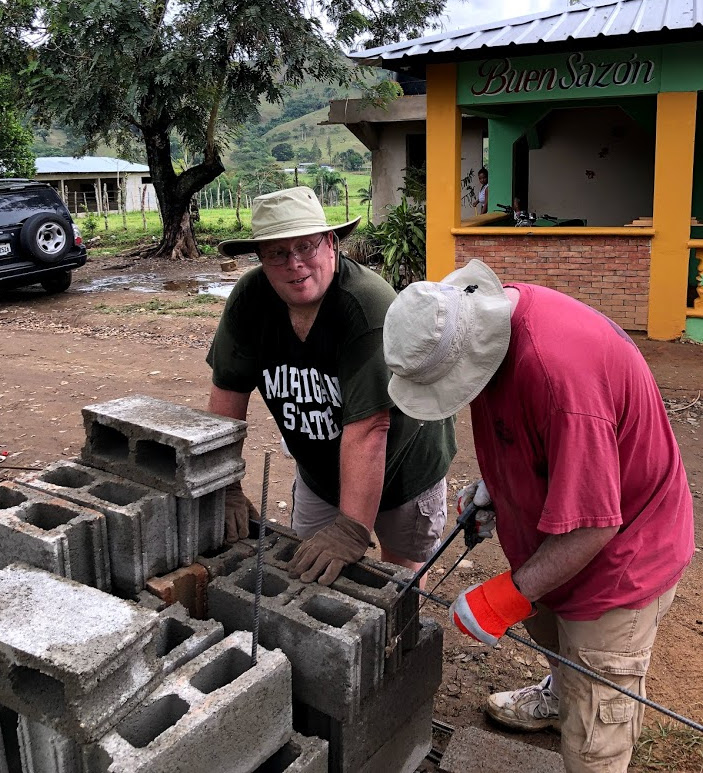
Once the walls were high enough, it was time to pour concrete
to form pillars between the wall sections.
Wood was nailed into place to create a form
for the pillars, and then we passed buckets of concrete to pour
into the form. The concrete was left to dry overnight, and then
the wood was removed. Below you can see two of the finished pillars.

During the week, several of us engaged in various activities
with the kids at the village school, including teaching them
to use laptop computers that we had brought with us as donations.
Education is something that the more forward-thinking of the
villagers regard as a key to economic improvement.
The Dominican Republic government has various programs that
do not seem to exist in Haiti; for example, if you provide a
building and educational materials and a minimum number of
students, the government will send salaried teachers to your
community to teach. Such programs are a good fit for NGOs
(non-governmental organizations) like FFP, who can often
help with the building and some of the educational materials
but have trouble providing teachers.
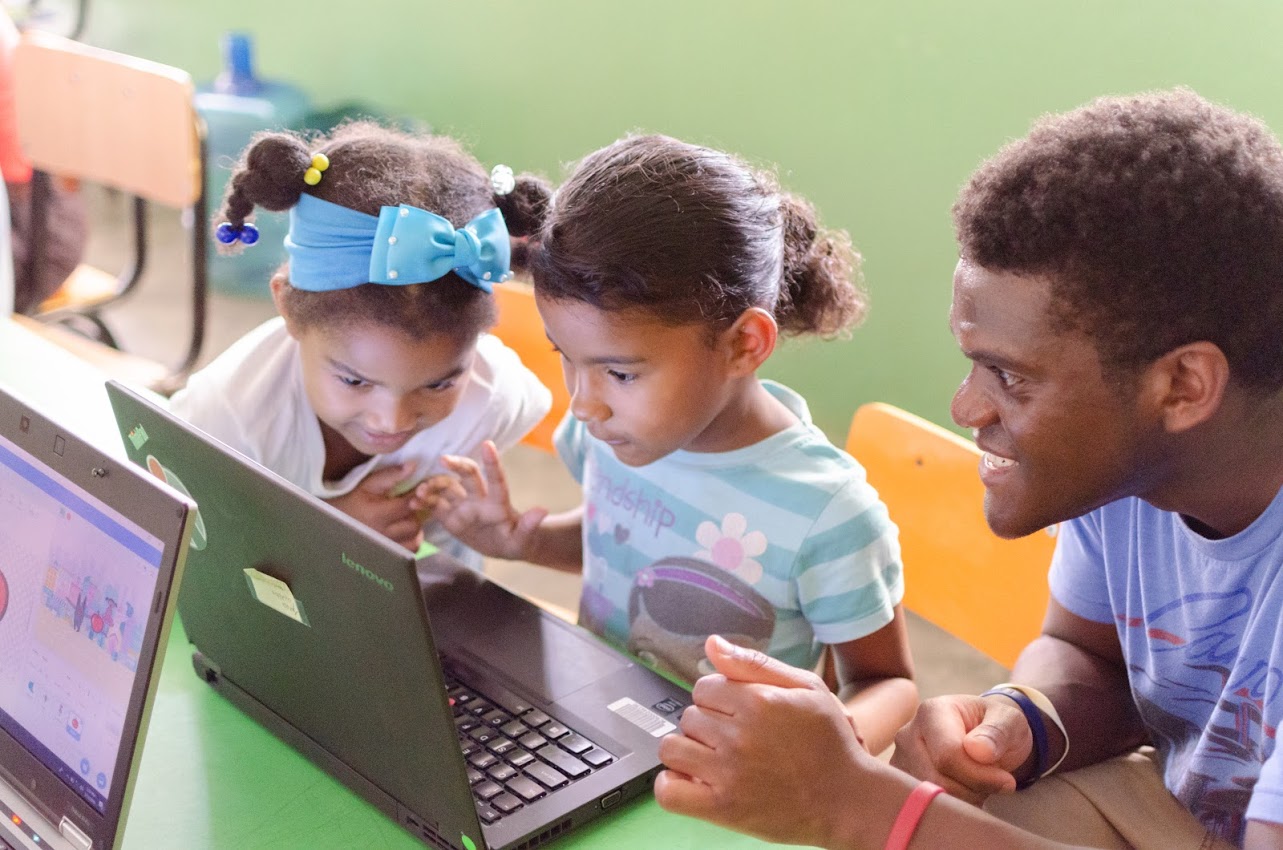

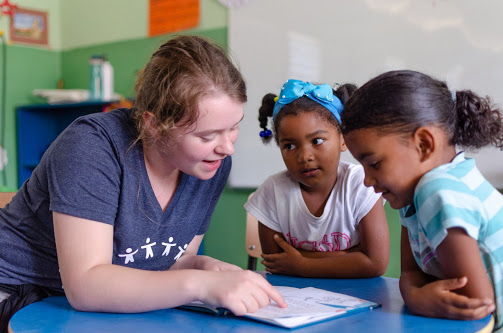


We also helped sand down and paint the walls of an auxiliary school
building that will be used for various activities, including
(I believe) serving lunch.


We did not have quite enough paint to finish the job during our
visit, but we were still quite pleased with the look of the walls
that we did manage to paint.
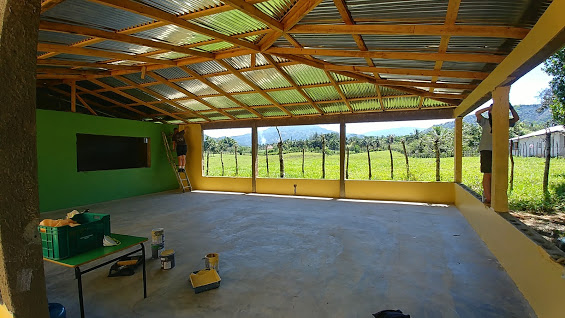
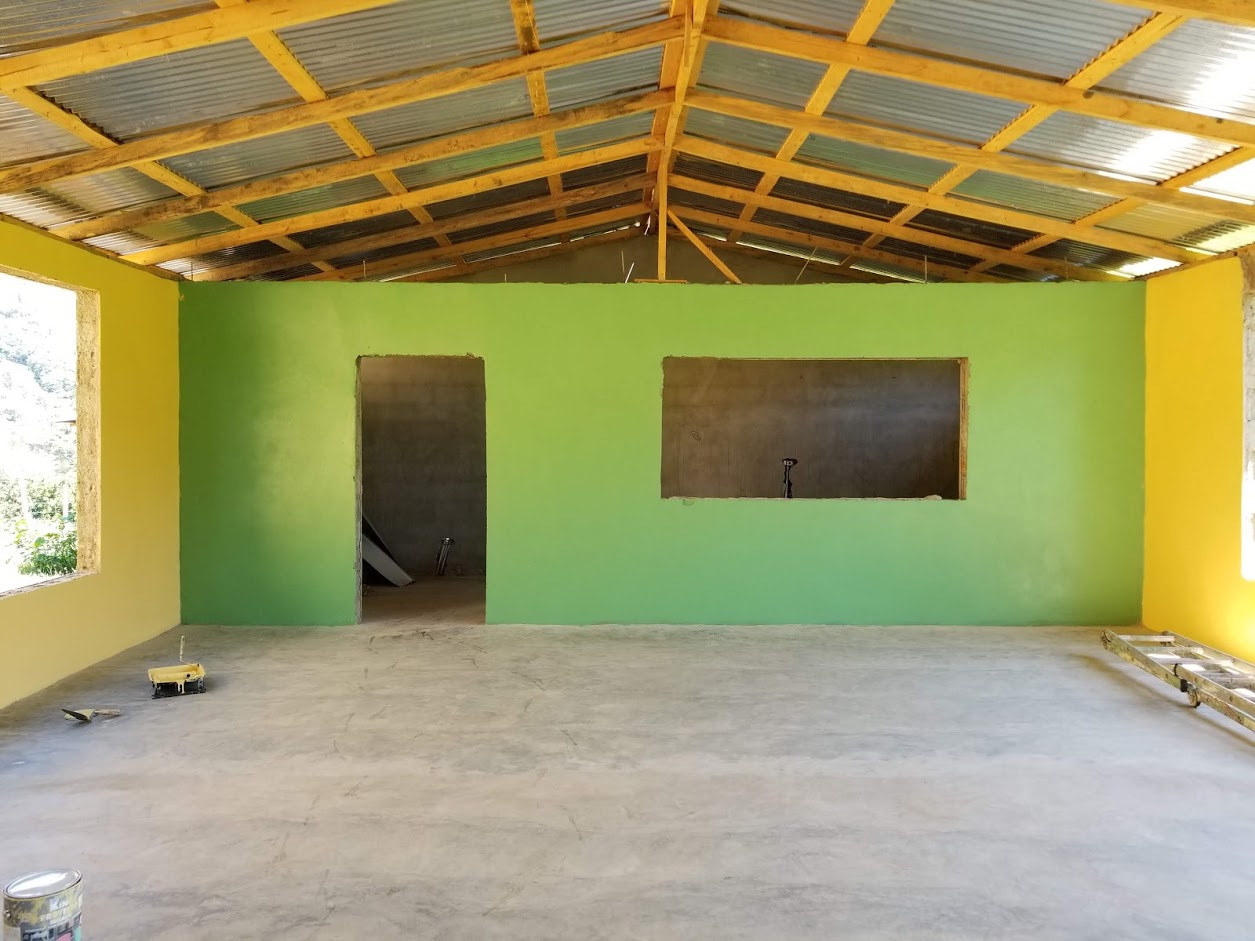
As mentioned before, road access to El Batey is a problem.
Not long ago, they spent a lot of time, money, and effort
to build a bridge, but to the villagers’ great dismay,
the bridge was destroyed in a storm. It can still be crossed
on foot and even by motorcycle, but not by car.
The village is considering
various plans for rebuilding the bridge, but unfortunately
there was nothing we could do about it during the time we were there.
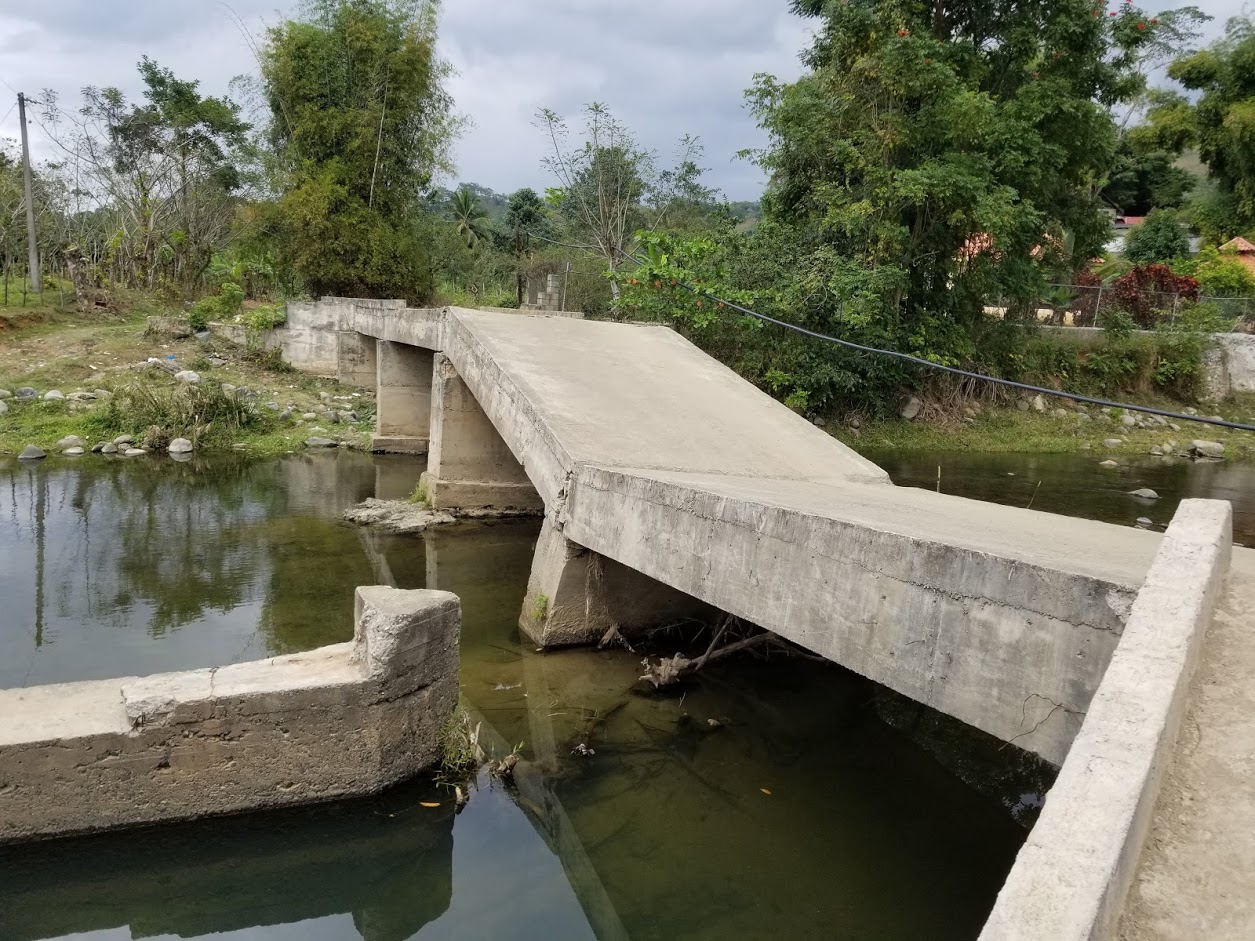
The other access road is by the edge of a stream and under constant
threat of destruction due to flooding.
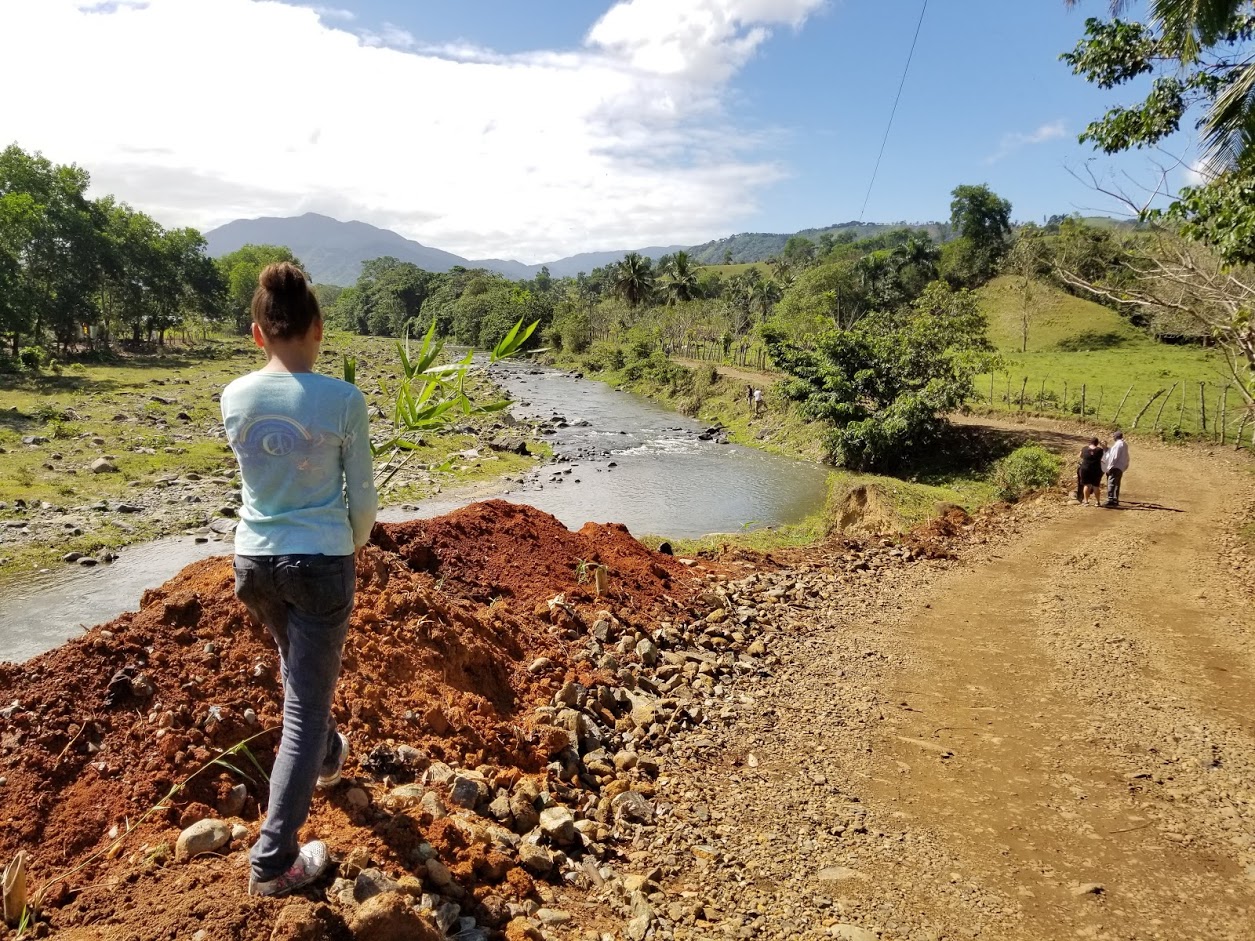
One of our projects was to
plant bamboo between the stream and the road, with the hope that the
bamboo will take root and stabilize the river bank.
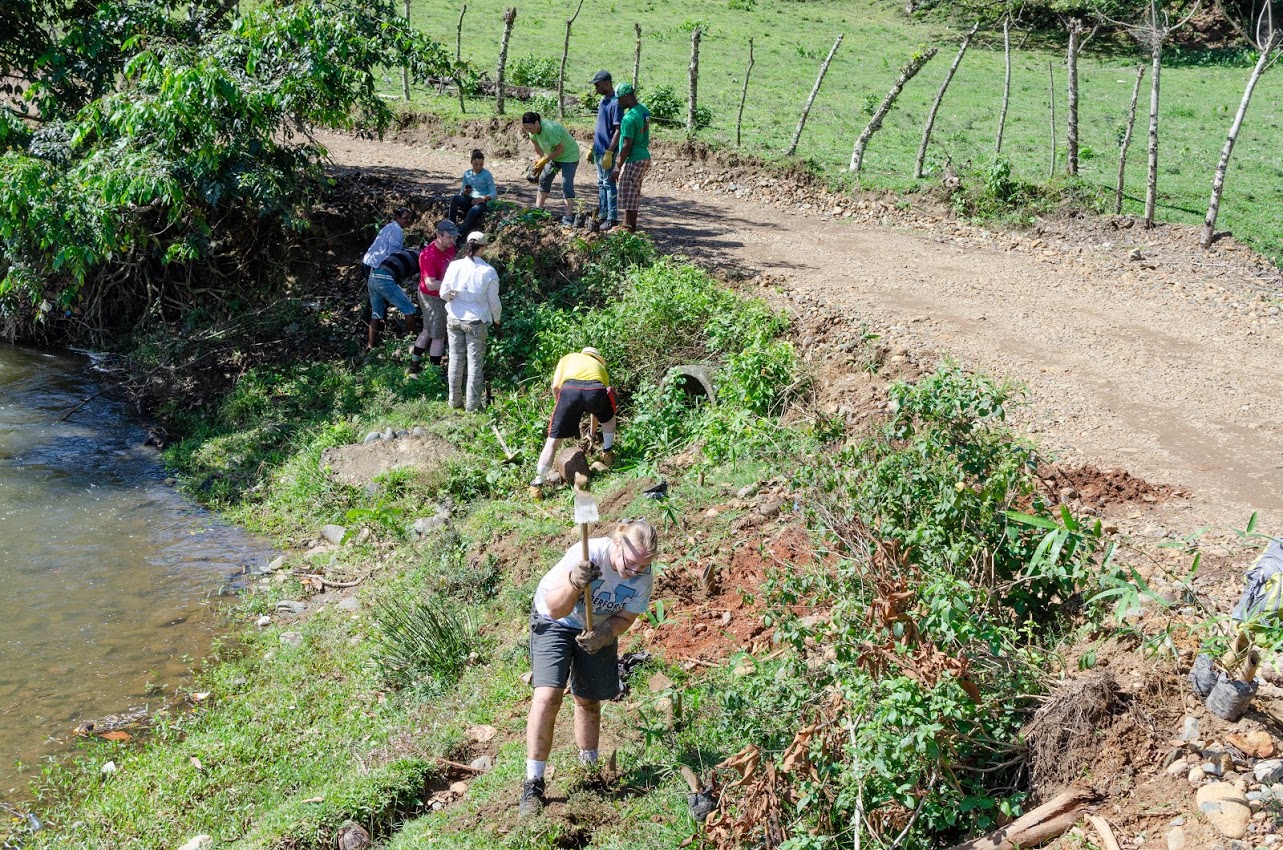

One way in which this trip was busier than most of our previous
trips to Haiti was that we had a lot of evening activities.
In fact we may have overdone it because we barely had time for
devotions and spiritual reflection during the week. We held
computer classes as well as small business training.
One evening, we met with several leaders in the community,
and got to hear their fascinating life stories and the history
of El Batey.
Also, we worshiped at the local church not just on Sunday but on Friday
night, when among other things there was a dedication service for
two babies (one Dominican, one Haitian—the Haitian baby is
shown below).
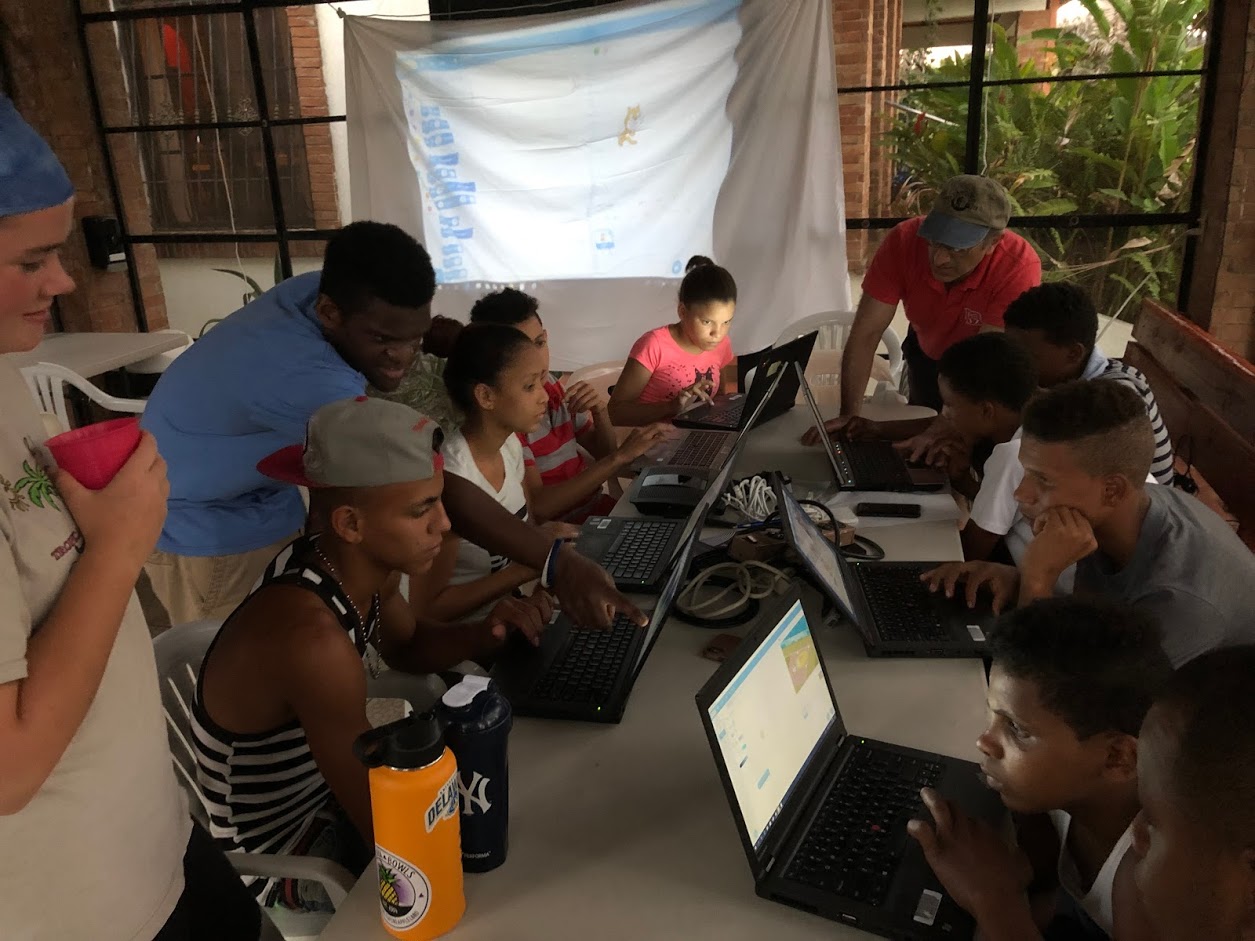


Our final day was a bit more relaxed than the others.
We began by taking a short hike to a waterfall in a nearby park
(Monumento Natural Saltos de Jima).

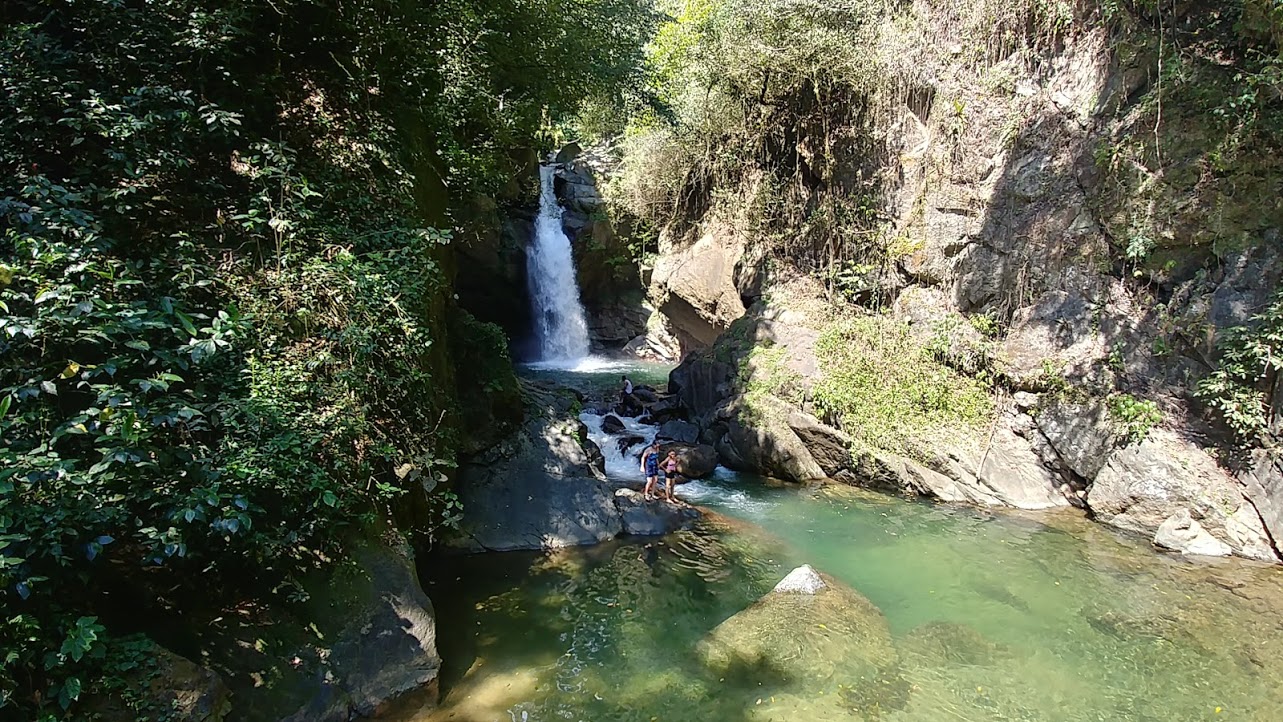
In the afternoon,
we ran some VBS (vacation Bible school) activities for the kids,
including handicrafts and a skit based on Shel Silverstein’s story,
“The Giving Tree.”
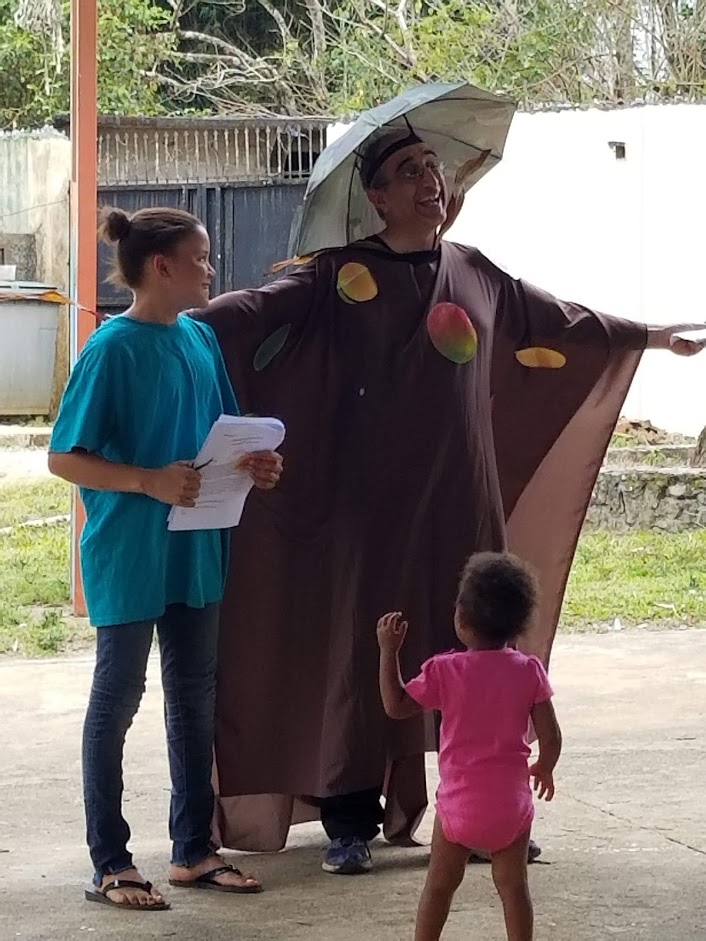
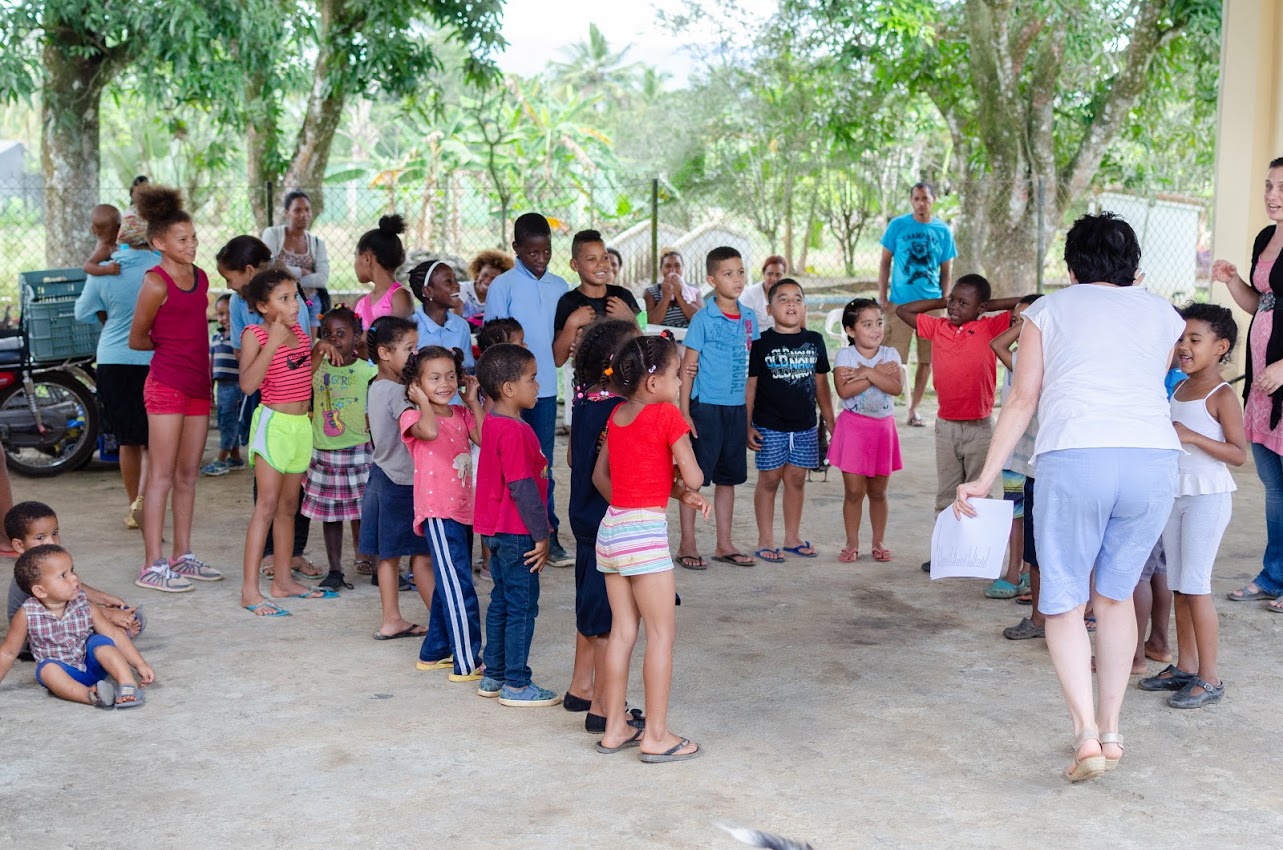
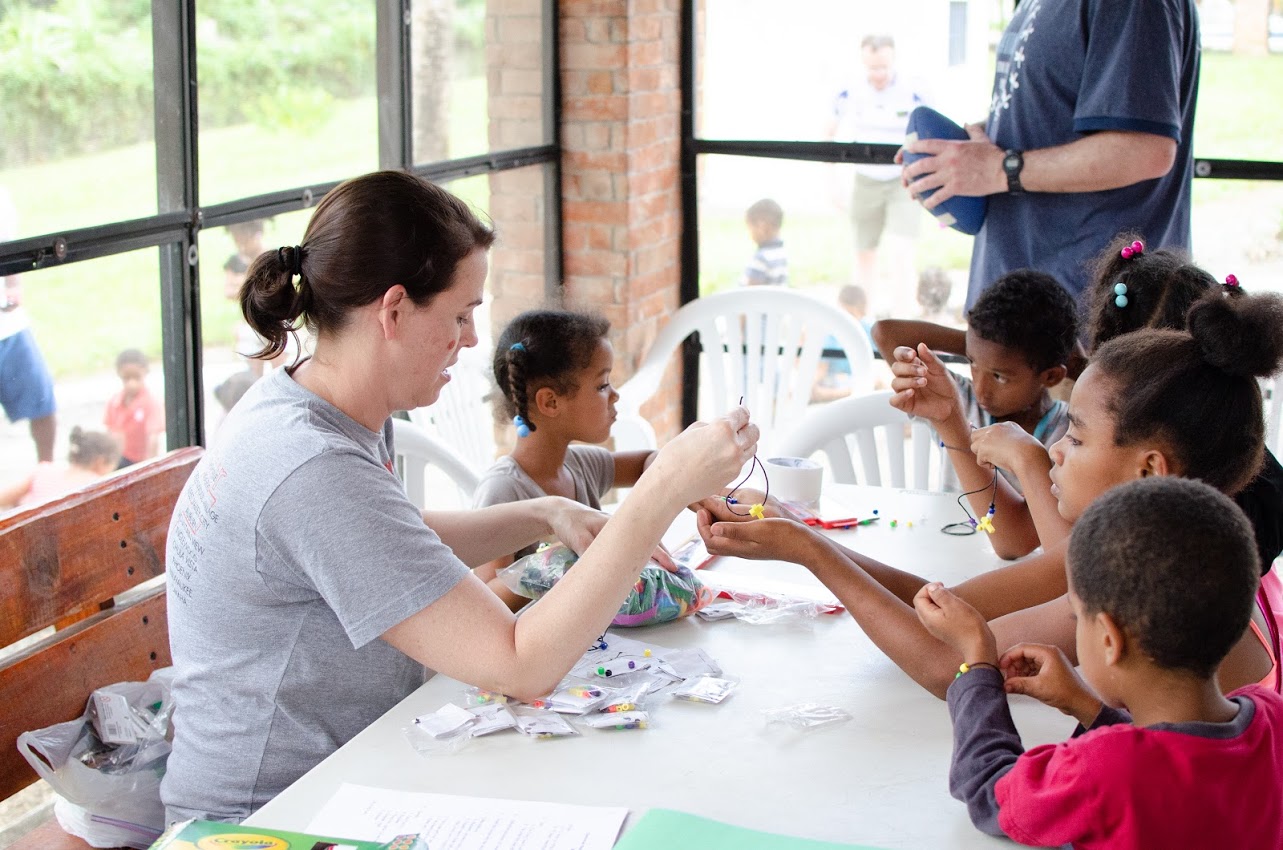
Kristin has a beautiful pool on her property.
VBS was rounded off with a pool party for the community.
Various toys and games were available for the kids too.
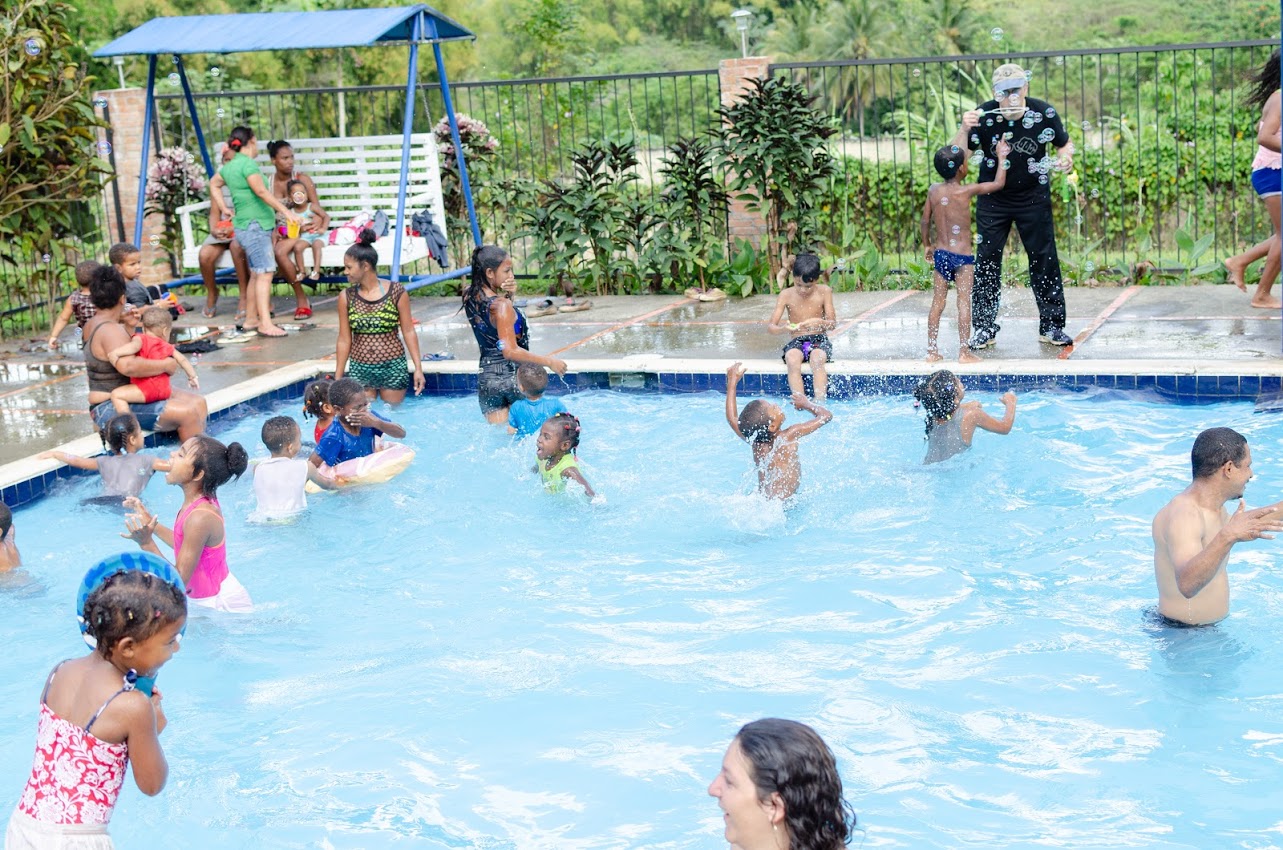
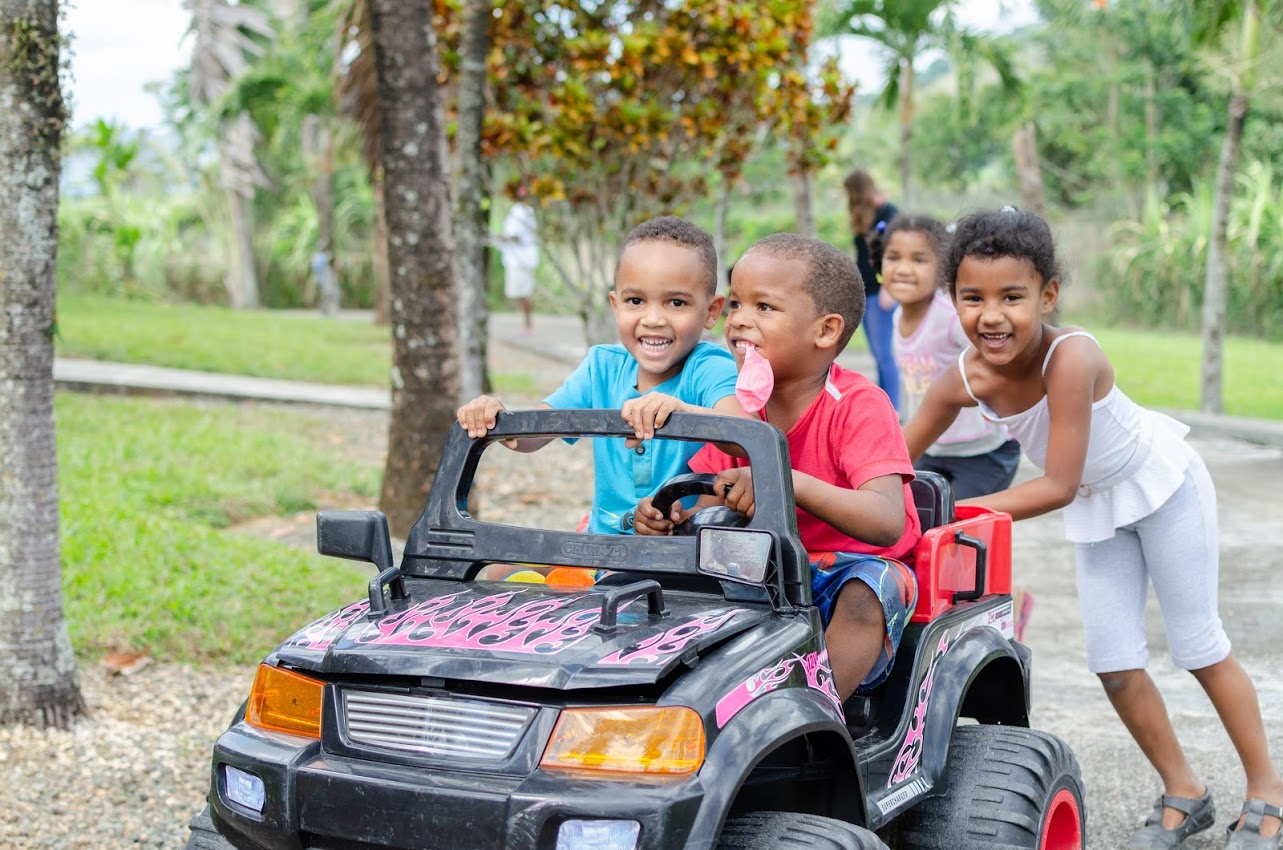
As a parting shot—here is the view from the top of a hill
that some of us got up early one morning to climb.
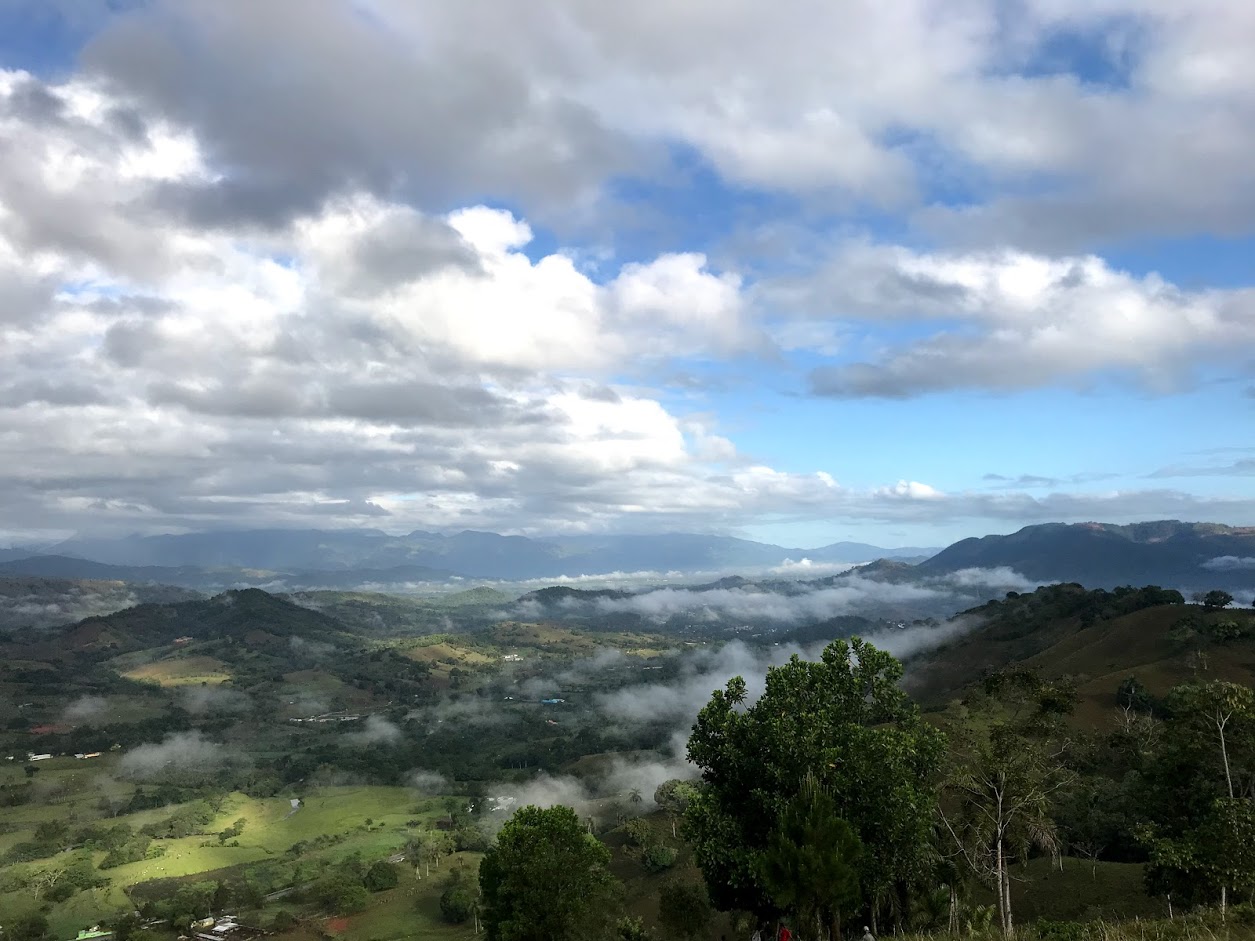









































 Back to Christian Stuff
Back to Christian Stuff